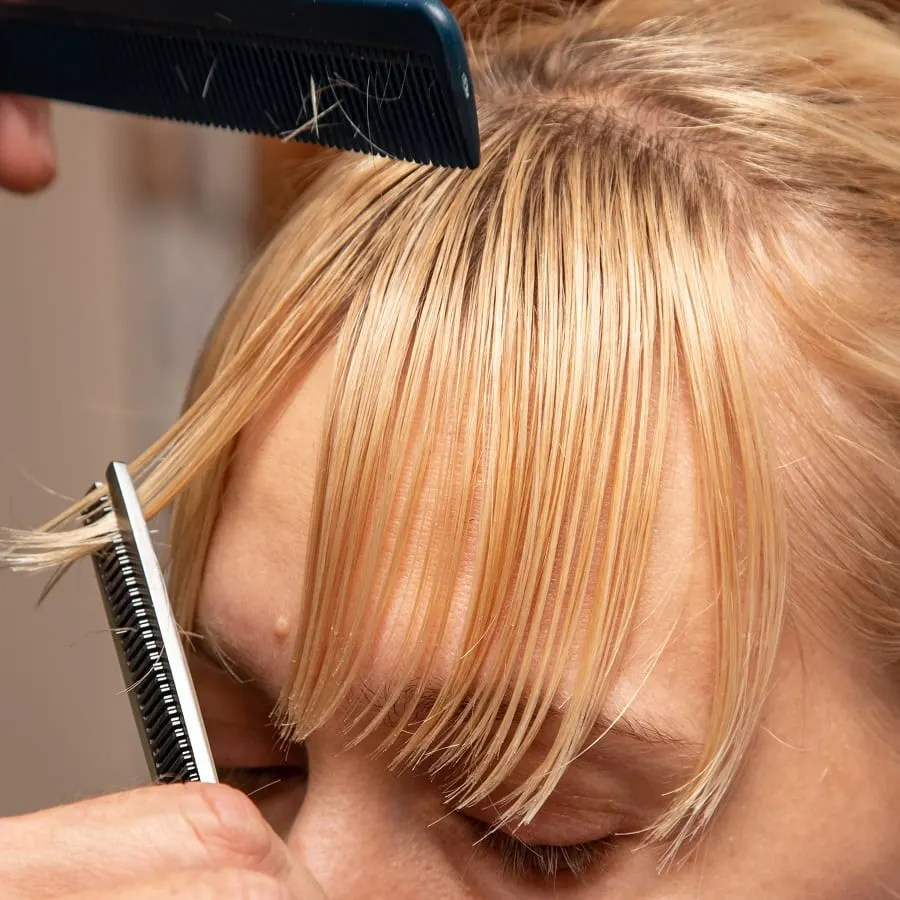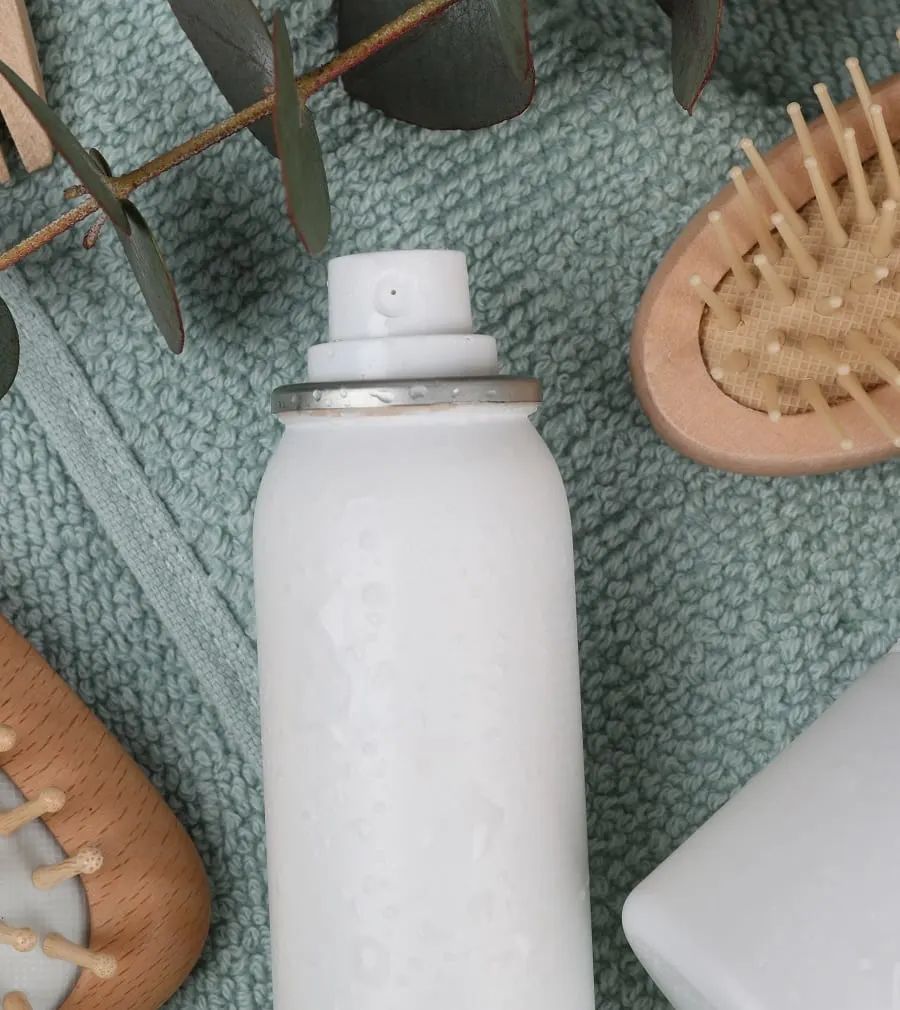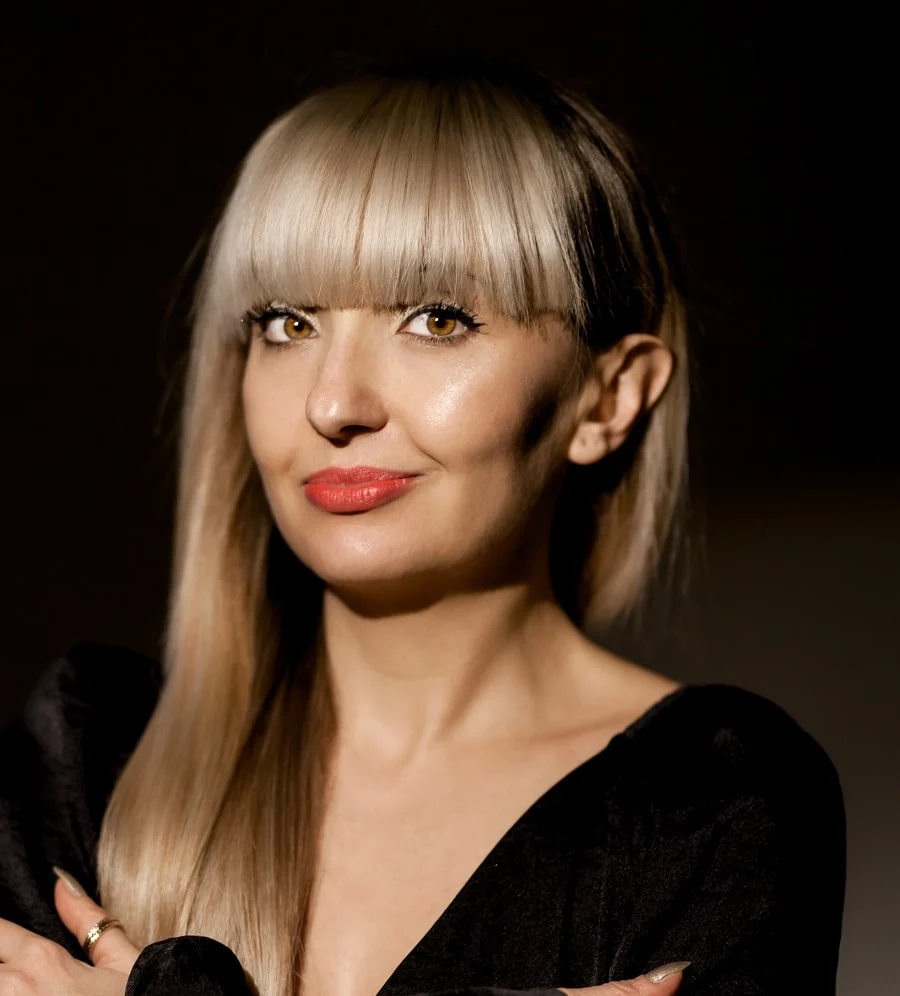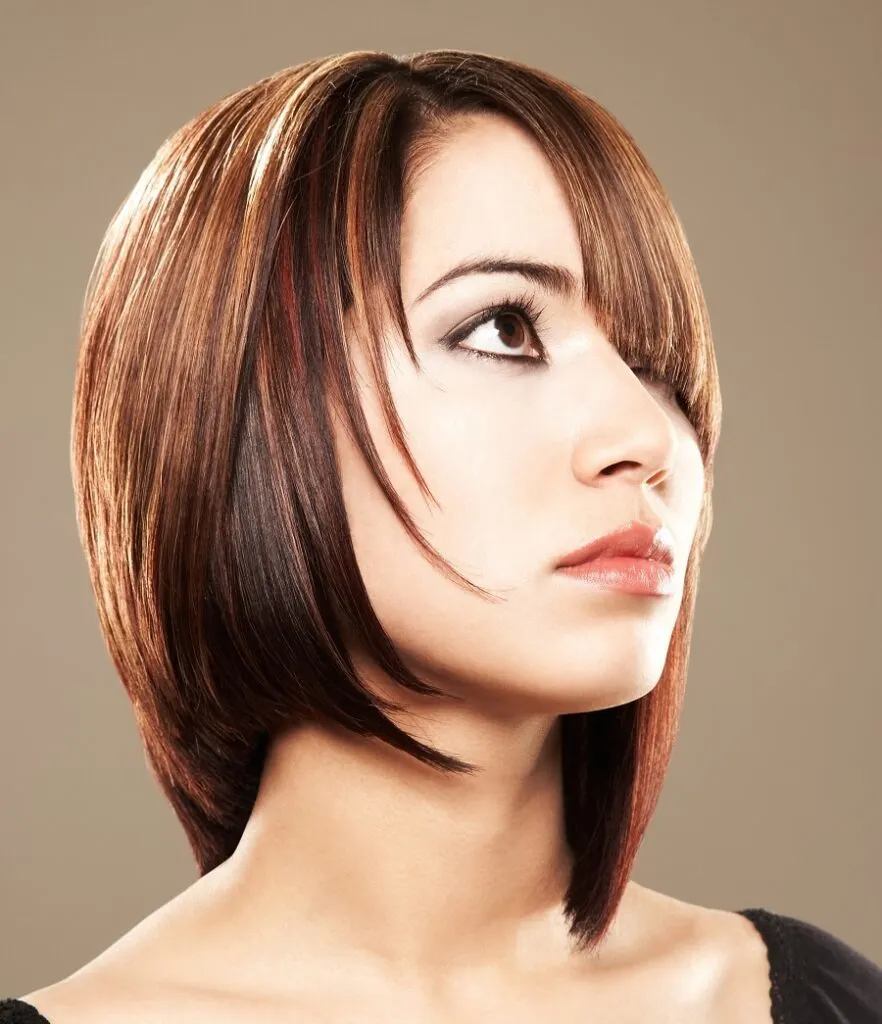Bangs or no bangs? Well, there will come a time in every woman’s life when she will look in the mirror and ask herself a question as old as time: “Should I get bangs?“
It might not seem like the most pressing question you’ve ever heard, but getting bangs can be a big deal, especially if you end up hating them.
We have personal experience with getting bangs on a whim and shedding more tears than we would like to admit afterward.
So, to save you tears, regrets, and awkward bang grow-outs, we’ve made a list of things to consider so that you can decide on bangs vs no bangs.
Now, don’t get us wrong; we are pro-bangs! But only if you’re prepared for what having bangs entails.
As you are asking if you should get bangs, you’re definitely confused. We’re here to make sure you really do want the bangs and
Bangs or No Bangs: Things to Consider Before Getting Bangs
Deciding between bangs or no bangs is more than just a momentary style choice; it’s a commitment that impacts your look and daily routine.
So, should you get bangs? Before you sit down in that salon chair and make the cut, there are some essential factors you’ll want to consider before getting a bangs hairstyle.
1. Bangs will Require Styling Every Day

Bangs will need a few minutes of styling every day to look their best. We like to say that you should plan on setting aside 5-7 minutes of our routine to style your bangs. This will most likely involve using a round brush and blow dryer or flat iron to refresh your fringe.
If you’re someone who already styles their hair with a blow dryer, flat iron, or curling iron almost every day then styling your new bangs will be a breeze for you. You’re already well-versed in using hot tools and you can simply style your bangs while you style the rest of your hair.
On the other hand, if you’re an air-dry girl who doesn’t even own a blow dryer or a low-maintenance queen who simply runs a brush through their hair once a day, bangs might not be the change you’re looking for.
For our anti-styling girls, we love the idea of adding some longer face-framing pieces to your haircut to change things up without adding hair styling to your daily routine.
2. Bangs will Need Regular Trims

When deciding if you should get bangs, consider the fact that you’ll need to get your bangs trimmed about every four weeks to keep them the right length and shape. We recommend having it done by your stylist because, although the idea of an at-home bang trim may sound appealing, the results are rarely satisfying (trust us, it never turns out well).
Usually, a bang trim only takes about 15 minutes in the salon and lots of stylists offer them for a small charge if you become a regular client.
Although these appointments are short, they are a commitment you have to be willing to make every four weeks, so be sure you can add this to your list of things to do!
3. Products Needed for Bangs

When you get bangs, dry shampoo will become your new best friend. We highly recommend keeping dry shampoo and texturizing spray nearby for fresh-looking bangs, even on non-wash days. We also suggest using a round brush and fine-tooth comb for styling your bangs.
Once again, many of us have been using these essential bang products for years, but those who prefer low maintenance may not be interested in adding multiple styling products or tools to their streamlined hair routine.
We believe that achieving success with bangs is all about being honest with ourselves regarding what we’re willing to do or buy to maintain them.
4. Hair Constantly Touching Forehead

This is a big one for us when it comes to bangs and something we think gets overlooked. It’s important to keep in mind that when you have bangs, you will have hair touching your forehead all the time. Even in the heat, wind, workouts, etc.
This doesn’t bother a lot of people (and of course you can utilize bobby pins and headbands!), and for those people, we say get those bangs!
However, if you’re always tucking your hair behind your ears or pulling it back off your face, you may quickly become annoyed by your new bangs.
For those of you who don’t love hair touching your faces at all times, try out some face-framing pieces that can be styled as a longer bang but can still be tucked behind your ears.
5. Face Shape Matters

Bangs or no bangs, consider your face shape before deciding! Even if you’re convinced that you should get bangs, every face shape has a complementary style of bangs that will be flattering on that particular shape. So, that means that the bangs you like may not be the best match for your face shape!
For example, if you have an oval-shaped face, you can wear any style of bangs from side-swept to blunt and straight across, you can rock them all!
If you have a heart-shaped face, a soft, parted curtain bang or longer bangs will be the most flattering. If you have a smaller forehead, you’ll look great with a baby bang and a larger forehead should choose a longer, fuller bang.
Talk with your stylist about what they would recommend for your unique face shape. When you choose the most flattering style, you can ensure bang success!
So, get hairstyles with bangs if you have an oval or heart-shaped face, are willing to invest time in maintenance, and are comfortable with the limitations they may impose on styling options.
On the other hand, if you have a different face shape, don’t want to commit to regular upkeep, have a hair type that may not work well with bangs, and prefer versatility in styling, it may be best to forgo getting bangs.
If you have high cheekbones, thick or short bangs may not be flattering and could accentuate your angular features. Consider long, parted, or S-curved bangs that skim the cheekbones for a softer look.
For those with round faces but regular cheekbones, opt for bangs but steer clear of thick styles. A bang style with a 3:7 ratio can offer a balanced, flattering appearance.
6. Maintenance Cost
Getting bangs? Don’t just count on a style change; factor in the cost too. The first haircut could set you back anywhere between $20 and $100. Now add in the monthly maintenance costs— trims are another $10 to $20.
You’ll also need your styling tools: dry shampoo, texturizing spray, and that special round brush! Add on another $10 to $50 for each of these. If you feel bangs aren’t your thing, that means more salon visits to fix or grow them out. So before choosing bangs or no bangs, take a look at your budget too.
7. Acne skin problem
If you’ve got skin that’s prone to breakouts, think long and hard before committing to bangs. Your fringe can trap sweat and dirt, which isn’t great for the forehead.
But don’t lose hope—keeping both your bangs and forehead clean is key. Make sure to regularly wash and style your hair with products that won’t irritate your skin.
And hey, on your days off, pin those bangs back to give your skin some breathing room. Follow a solid skincare routine and you can rock those bangs without sacrificing clear skin.
8. Hair Type and Texture
Bangs or no bangs – before deciding, consider your hair type, texture, and characteristics too. If your hair is on the thinner side, skip the thick bangs. They’ll make the rest of your hair look sparse. Instead, aim for a lighter fringe that won’t take away too much volume from the back.
Got dry or frizzy hair? Condition well before even thinking about those bangs. They’ll be front and center, so you want them to look their best. And for my curly-haired friends, know that you might be in for a lot of styling if you want to keep those curls in check.
9. Consider Your Hairline
If you have a high hairline, bangs could be a good match for you as they can hide a big forehead as well as a curved forehead. Consider thin or diagonal bangs for a youthful or edgy look. For a glamorous Korean-style look, opt for S-curved or mid-part bangs that complement your face shape.
On the other hand, if you have a low hairline, bangs could make your face appear “too narrow”. In that case, go for a side part or a hidden part to add some lift to your hairstyle without making your forehead look shorter or narrower.
10. Consult a Professional
Before you even think about getting bangs, book a consultation. A seasoned stylist will consider your face shape and hair type to help you pick your best look. Some salons even have virtual try-ons or wigs for a test drive. Bring photos to eliminate any guesswork; let the visuals speak. The consultation isn’t just chit-chat; it’s vital to make sure you’ll love the new bangs look.
Key Things to Remember
- Bangs can be a commitment so make sure you’re ready to take the plunge
- Bangs will require a few minutes of styling each day
- You’ll need to get bang trims about every 4 weeks for maintenance
- Add dry shampoo, texturizing spray, and a round brush to your hair products to style the best bangs
- Keep in mind you’ll always have hair touching your face when you have bangs
- Choose the right bangs for your face shape for the best results!
- Most importantly, have fun with your hair. If you want bangs, get them and rock them!
